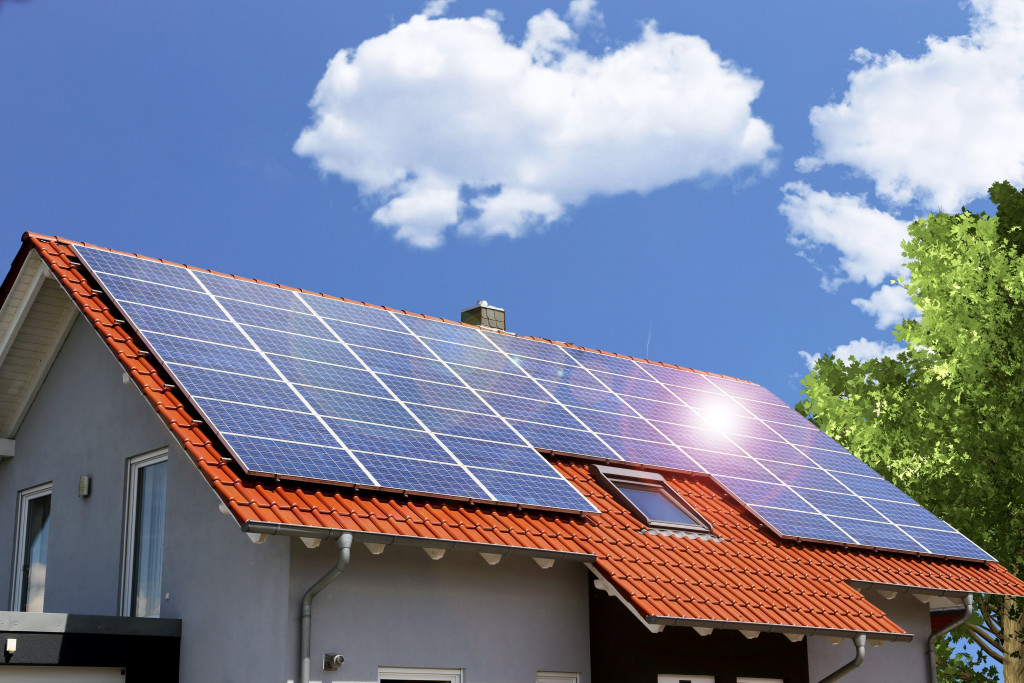- Global warming is an increasing issue leading to a demand for more resources, making sustainability important.
- Sustainable homes reduce reliance on finite resources, conserve energy and create healthier indoor air quality.
- Solar panels, insulation, water-conserving fixtures and appliances, and rain barrel collectors are all ways to increase sustainability in the home.
- Reduce vampire electricity by unplugging devices or using intelligent plugs when not in use.
- Creating a sustainable home is all about making conscious decisions to help protect the environment for future generations.
A sustainable home operates in a way that is mindful of the environment and its resources. It’s more than just a trend; it’s an important lifestyle choice that can make a big difference in our everyday lives. Here, we’ll discuss why sustainability matters and how to create an eco-friendly home.
The Current State of Global Warming
Global warming has become a significant issue on the international stage. As temperatures rise, the consequences of burning fossil fuels and other activities that generate greenhouse gases will become more severe. Additionally, there is an increasing demand for resources like water, food, and energy; this makes sustainability all the more important to preserve the planet for future generations.

Why Sustainability Matters
Sustainability means taking responsibility for your actions and being conscious of the world around you when you make decisions. Making sustainable choices has numerous benefits, both for ourselves and the environment.
For starters, living sustainably reduces your reliance on finite resources like oil and gas, which helps protect natural habitats from destruction. Sustainable practices also reduce pollution, conserve energy, and create healthier indoor air quality by avoiding toxic chemicals in traditional materials like paint or carpeting. Finally, green homes often require far less maintenance than those built with traditional materials, saving homeowners time and money in the long run.
What is a Green Home?
A green home is built and operated with the environment in mind. This means using materials, appliances, and systems to minimize energy consumption and waste. Here’s how you can get started in building one.
Solar Panels
Installing solar panels is one of the best ways to make your home eco-friendly. These collect energy from the sun and convert it into electricity that can power your entire home. Solar panels are an investment up front, but in the long run, they’ll save you money on your electric bills and help reduce your carbon footprint. Moreover, many states offer incentives and tax breaks for homeowners who install solar panels.

Insulation
Another way to make your home more energy-efficient is by installing insulation. This helps maintain a consistent temperature throughout, reducing the energy needed for heating and cooling. Modern insulation materials are also made from sustainable sources that don’t require a lot of energy or resources to produce.
Moreover, cleanliness is essential for insulation. Dirty air ducts can lead to inefficiency in cooling and heating, leading to more energy consumption. That’s why you should hire a local air duct company to help you. These companies provide air duct cleaning services to help keep your home running at its best.
Water Conservation
You can also conserve water in your home with low-flow fixtures and efficient appliances. Low-flow showerheads, toilets, and faucets reduce the water used per flush or cycle, helping conserve resources and save money on utility bills. Additionally, you should invest in energy-efficient appliances like washing machines and dishwashers, which use less water than traditional models.
Rain Barrel Collectors
Installing a rain barrel is a great way to reduce your water bill. These collect the runoff from your roof and store it for later use. The harvested rainwater can be used for activities like watering plants or cleaning cars, reducing the energy needed to pump and purify drinking water.
Energy-Efficient Appliances
You can also make your home more sustainable by investing in energy-efficient appliances. These are designed to use less electricity and water than traditional models, helping you save money on your utility bills while still getting the job done. Additionally, some appliances have unique features like timers or remote controls that allow you to adjust settings from your phone.
Reduce Vampire Electricity
Vampire electricity refers to the energy consumed by appliances and electronics when plugged in. To reduce this, you should unplug all devices when not in use or plug them into a power strip that can easily be switched off. You can also invest in intelligent plugs that automatically turn off when idle.
Creating a sustainable home is all about making conscious decisions regarding energy use and materials. With the right investments and changes, you can make a big difference in your energy consumption and help protect the environment. By taking these steps, you can help ensure that future generations have a healthier and more sustainable planet to call home.
